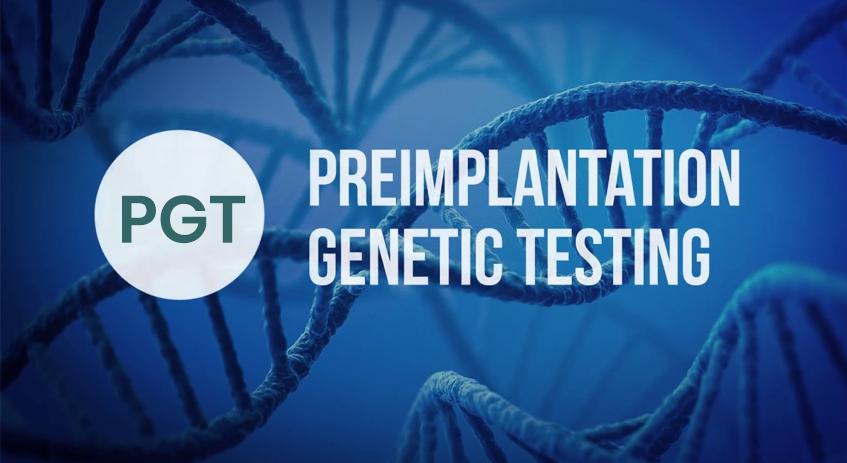PGD (Preimplantation Genetic Diagnosis) It has a different usage area than PGS. With PGD, abnormalities called single gene diseases are screened.
PGD is especially applied to couples at risk of single gene disease (cystic fibrosis, thalassemia / sickle cell anemia, hemophilia, balanced structural chromosome disorder, etc.).
For example, the presence of balanced structural translocation in the mother and father leads to the formation of genetically unstable sperm or eggs. This can cause chromosomally abnormal embryos to form if the sperm and egg are fertilized. Such an embryo may lead to death of the embryo, miscarriage or birth of a child with serious medical problems.
Who should have a Preimplantation Genetic Diagnosis (PGD)?
Detection of single gene disease carriage which is likely to be transmitted to the infant by screening in at least one of the pairs (being rearranged structural chromosome carrier; translocation, inversion, deletion).
Having children with previous single gene disease (such as cystic fibrosis, thalassemia, sickle cell anemia, hemophilia).
Preimplantation Genetic Diagnosis (PGD)
There may be some technical problems during preparation or biopsy.
Even if a successful IVF and PGD procedure is performed, pregnancy may not occur after the transfer.
Since only a certain number of chromosomes can be controlled, all chromosomal and genetic abnormalities cannot be diagnosed with PGD.
As a result, only a specific test can be performed in the biopsied cell. It is not possible to screen all genetic problems with a single cell taken for testing.
How and when should Preimplantation Genetic Screening and Diagnosis (PGS and PGD) be performed?
Following fertilization (fertilization), the embryo is monitored in the laboratory for 3 days until it reaches the 8-10 cell stage in the culture system. One or two cells are taken from these 3-day-old embryos by biopsy and specific chromosomal tests are performed. PGS / PGD is applied to chromosomes (13, 16, 18, 21, 22, X and Y) where chromosomal anomaly is most common.
Embryos that have been biopsied are followed up to 5 or 6 days until they reach blastocyst stage and only embryos without anomalies are transferred to the uterus of the expectant mother.
What are the advantages of Preimplantation Genetic Screening and Diagnosis (PGS and PGD)?
Choosing the best healthy embryo to be transferred contributes to the success rate of pregnancy.
It is aimed to reduce the risk of miscarriage.
The embryo to be frozen or screened is decided.
The aim is to encourage patients with chromosomally normal embryos but not to become pregnant.
Preimplantation in Embryo Genetic Screening and Diagnosis Who is applied?
In order to make genetic diagnosis in embryo, these embryos should be developed under laboratory conditions. For this, the egg cell to be obtained from the woman and the sperm cell to be obtained from the man should be brought together in the laboratory, that is to say fertilization and embryo development by microinjection technique. In other words, genetic diagnosis in the embryo requires a laborious and costly application of high technology. Therefore, this technique is applied only in couples with special risks. Which pairs the PGD will be applied for depends on the purpose of the application.
Preimplantation Genetic Screening and Diagnosis
for different purposes:
1. Anomaly screening
2. Investigation of disease in embryos
3. Determination of cancer in risky families
Preimplantation Genetic Screening and Diagnostic Anomaly Screening
It is aimed to screen embryos for the most common chromosomal defects in couples who have difficulty in having children and whose anomaly risk is increased in embryos to be obtained during treatment.
The aim of the anomaly screening is to determine the most common chromosomal abnormalities in the embryos, such as trisomy (chromosome number higher than normal) or monosomy (chromosome number less than normal). Embryos found to have anomalies are not transferred into the uterus and destroyed. Only embryos known to be healthy are transferred to the patient. In this way, the risk of developing a baby with genetic anomaly in the uterus is eliminated from the beginning.
Generally, embryos with genetic anomalies cannot be held in the uterus. Even if adherence occurs, pregnancy often results in miscarriage in the first 10 weeks. In fact, this is a great advantage for human nature to maintain its balance. Nature tries to eliminate the unhealthy by protecting the healthy one. In this way, we see very few anomalous infants or children around us. Unfortunately, this rule does not always apply.
If the embryo has severe genetic defects, it is often differentiated from others because of slow development, stagnation or poor quality development during laboratory observation, and such embryos are not inserted into the uterus. However, simple trisomy (D


Add Your Comment